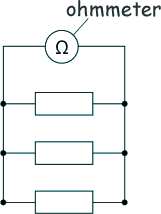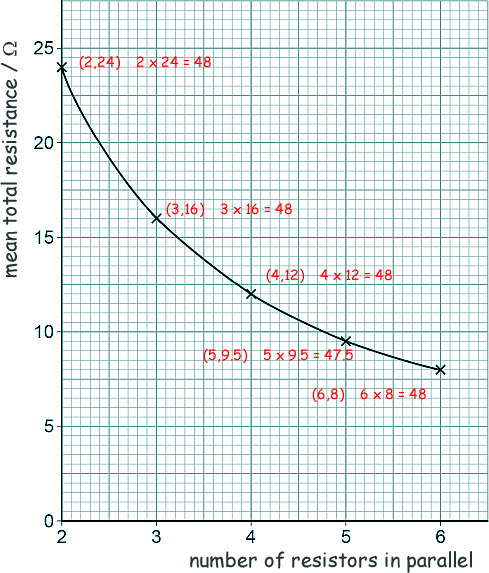GCSE Standard Questions: Electric Circuits Q10. Buffy investigated how the total resistance of identical resistors connected in parallel varied with the number of resistors. She used an ohmmeter to measure the total resistance of the resistors. The diagram shows the Buffy's circuit with three resistors.
She repeated each reading of resistance three times. The table shows some of the results for three resistors in parallel.
(a) Calculate value X 15.8 + 15.3 + X = (3 x 15.7) X = 47.1 - 31.1 X = 16.0 [2 marks] (b) Buffy thought that taking a fourth reading would improve the precision of the results. The fourth reading was 16.2 Ω. Explain why she was wrong. Precise results show little variation from each other. [2 marks] (c) The graph shows the results box from the investigation.
Buffy concluded that the number of resistors in parallel was inversely proportional to the mean total resistance. Use data from the graph to explain why she was correct. If the results were inversely proportional the product of the values for each point will be constant.
2 × 24 = 48, 3 × 16 = 48 4 × 12 = 48, 5 × 9.5 = 47.5 (the only anomoly) 6 × 8 =48 [3 marks] (d) Explain why adding resistors in parallel decreases the total resistance. A parallel arrangement allows multiple paths for the current (charge/electrons) to flow down when a potential difference is applied. [2 marks] (Total 9 marks) |
Follow me...
|
||||||||||||||||







